NOW&AFTER’20’21
The 10th edition of International Video Art Festival Now&After will be held 7 – 26 September, 2021, 18+
The theme of Now&After’20’21 is THE POSSIBILITIE OF COLOR
Now&After’20 venue
Winzavod Contemporary Art Center, Red Hall
4 Syromyannichesky Lane, 1/8, building 6.
We will present the best works selected for participation in the festival in 2020, which was postponed to 2021 due to the epidemiological situation.
During this time, the festival worked online. In November-December 2020 Now&After'20 was shown on the International Video Art Channel VisualcontainerTV.
In 2020-2021 a series of online meetings with Now&After participants Video Artist: Now&After was held in collaboration with Moscow Museum of Modern Art within Now&After'20-21 program.
Now&After’20 Special Program took place at the Education Center of the Moscow Museum of Modern Art on October 21–24, 2020. We presented projects by Videoformes Digital Arts Festival (France), Waley Arts Center (Taiwan), Over The Real Video Art Festival (Italy), Suwon Photo Festival (Republic of Korea), Art-Video-Fest Dagestan, and Belgian video art project Common Grounds.
The exhibition at Winzavod will collect works of all 48 participants of Now&After’20, both competition and non-competition programs.
“When we’re asked “What do the words ‘red’, blue’, ‘black’, ‘white’ mean?” we can, of course, immediately point to things which have these colours, — but our ability to explain the meanings of these words goes no further!”
Ludwig Wittgenstein “Remarks on Colour”
Artists don’t need words to express their sense of color. In their works, video artists from different countries explore color as a social, emotional or cultural metaphor for real and virtual worlds, memory and the possibilities of the future.
The world is colorful, the number of hues and shades it has is countless — every artist knows that. Blue sea, azure sky, green leaves, gray concrete… Apart from visual perception, we can also understand color in another way: happiness makes the world around you golden and orange, the world is painted in dull and passive gray when you’re bored, and the anticipation of spring infuses everything around you with green. However even a green and golden world would seem black at the time of misery and pain, and red — if blood was spilled.
The works of all 48 Now&After’20 participants, both competition and non-competition programs will be presented at the exhibition at Winzavod.
Now&After’20 special program includes video art projects of the well-known international festivals , such as Videoformes Digital Arts Festival (France), Over the Real Festival (Italy), Suwon Photo Festival (Republic of Korea), Waley Art (Taiwan) as well as video art projects from Dagestan and Belgium. Performances and meetings with artists and curators will also be held there.
Now&After’20’21 organizer:
Media Art Center Now&After
Now&After’20’21 co-organizers
Now&After’20’21 partners
Moscow Museum of Modern Art
Now&After curator and director is Marina Fomenko
Winners
1st place
Mikhail Zheleznikov, Revision, Russia, 2020, 4:00 ($500 prize)
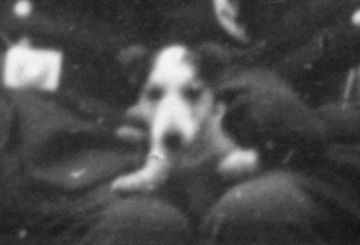
2nd place is shared between
Shir Handelsman, Recitative, Israel, 2019, 5:00 ($250 prize)
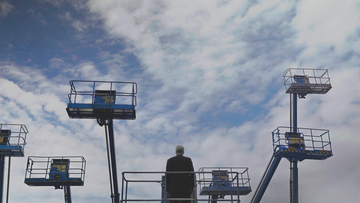
Sandra Pulido, Memorial, Colombia, 2019, 7:47 ($250 prize)
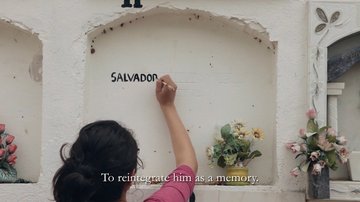
The 3rd place
is not awarded
The Honorary Jury Mention
Jacqueline Heeley, Philippe Faujas, The Long Way Round, Ireland, 2020, 13:44
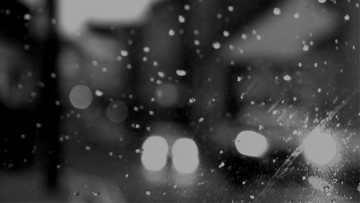
Tooraj Khamenehzadeh, I’m Not a Song to Be Sung, USA, 2019, 3:36

Florencia Levy, Fossil Place, Argentina, 2019, 15:00
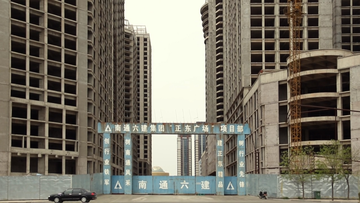
Participants
COMPETITION PROGRAM
-
Michiel van Bakel, Re-sculpted in Time Sanatorium Zonnestraal, Netherlands, 2020, 10:00
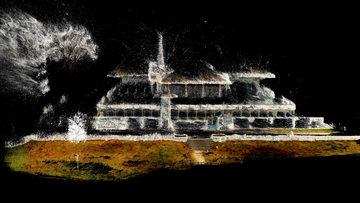
Drifting between data and images and hovering amidst seemingly incompatible moods: Tarkovsky’s cinematic dreams on the one hand and Zonnestraal’s utopian architecture on the other. The sanatorium building is converted into 'point clouds’ and models where you seem to fly through - as in a dream. These ghostly images merge with the mysterious images/data derived from the masterful films of Tarkovsky.
-
Dmitry Bulnygin, Métamorf, France, 2019, 7:00

Métamorphe is the mythological creature that can change its appearance, it can be both a regular animal, and a demigod. This video is about the common nature of human and animal movement, about the special laws of physics under water, about the play of light and shadow on the human body, about lightness and ease.
-
Ro Caminal, If I Steal the Sea from You, Spain, 2018, 15:00
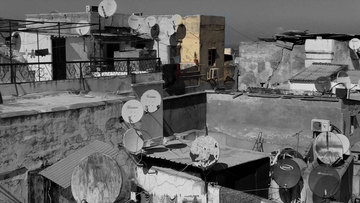
The film comes from the idea of symbolizing the material, the physical and the emotional exploitation in which colonization was based. More than any other district of Algiers, the Kasbah represents the “otherness”. Its winding streets are a labyrinth to the unknown where you want to get lost and where you are afraid of being lost. Taking into account the personal and subjective experience of the city, a double narration is built by the artist and an Algerian collaborator (Ahmed Chaabi) weaving between both a portrait of personal and historical feelings of the place. A poem of love about domination and mistrust. What the Kasbah had represented yesterday and what it is today, its myths and its realities, and an uncertain future.
-
Natasha Cantwell, Spinneret, Australia, 2018, 1:40
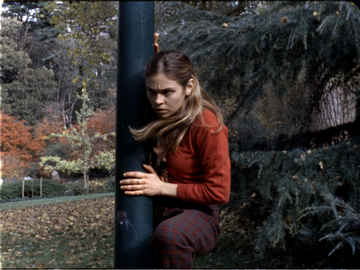
Spinneret is part of a series of works that reflect on the animal instincts that are buried beneath social conventions. With dance moves inspired by the mating rituals of the Australian peacock spider, this film looks at displays of bravado and intimidation. The series was inspired by my relocation from New Zealand to Melbourne, Australia and a hunch I developed that the character of a nation is reflected in it's wildlife.
-
Natasha Dahnberg, Passion, Sweden, 2020, 10:12
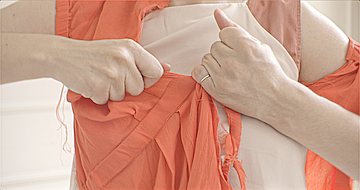
Passion is a film about the desire to find the perfect love. About the necessity and the impossibility of it. The heroine of the film is trying on new dresses for what seems like forever, but, unable to find the one, she gets rid of them in cold blood. The hero of the film is color red, the symbol of passion and death. Throughout the whole film the color of the fabric changes from pale pink to crimson, expressing the nuance of the emotional strain. These dress changes represent the search for a new look, new life, new illusion. The violent break up with the dress is a sacrifice bringing forth hope for a new love.
-
Anastasia Denisova, Maria Alina, Bored in the House, Russia, 2020, 20:00
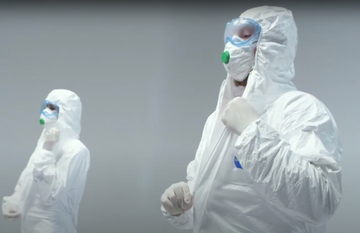
This video is dedicated to the cycle of working through loss, grieving over the old way of life and accepting a new objective reality — a pandemic. The human mental health makes peace with disasters and shocks according to the following scheme: denial - anger - bargaining - depression - acceptance. BORED IN THE HOUSE is a rap single released in the midst of the pandemic, which became a top hit on TikTok. Millions of people around the world record funny videos to this song. These videos, with cats bored at home, with health workers dancing, are gradually replaced by monotonous rituals of donning personal protective equipment from numerous video instructions, recorded by doctors for doctors around the world and appearing on the Internet daily.
-
Silvia De Gennaro, Aeternus Amor, Italy, 2020, 5:18
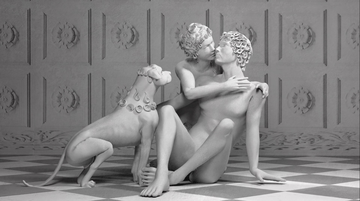
The story of Adonis and Venus freely adapted from Ovid's Metamorphoses. Tribute to Canova
-
Francisco José Fargas, The Deer Woman, Spain, 2018, 7:52
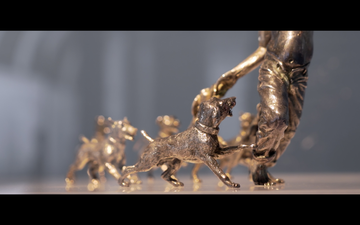
Disturbed because of what she is surrounded by, she tries to leave from the space where she is not able to remember how she got there.
-
Ewa Górzna, Katarzyna Miron, From a Distance, Finland, 2020, 14:10
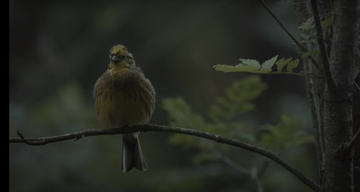
“From a Distance” is a short film exploring the ways in which wild animals and humans encounter and coexist in the same habitat. It is a journey through the mysterious, intriguing wilderness where animal and human paths intertwine or cross for a short fleeting moment.
-
Shir Handelsman, Recitative, Israel, 2019, 5:00

An opera singer stands on a lifted platform, singing a Martyr's wish for redemption. A counterpoint between the human voice and mechanical sounds of machinery moving up and down. The music, taken from one of J.S Bach's cantatas, is the Recitative Movement which describes the ascension of Christ and expresses the desire to become one with God.
-
Jacqueline Heeley, Philippe Faujas, The Long Way Round, Ireland, 2020, 13:44

The intangibility of elsewhere.
-
Meirav Heiman, Ayelet Carmi, The Procession, Israel, 2018, 13:16
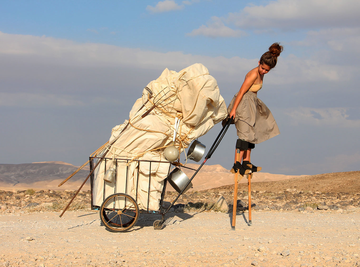
The procession of hikers along the trail—a hiking route that runs the length of the State of Israel—extends over three of the walls. The identity of the participants—possibly nomads, possibly survivors or refugees—is unclear, since they carry no markers of affiliation or time. They advance using odd devices which prevent their feet from touching the ground, generating a peculiar, alienating movement experience between the hiker and the land. Walking becomes a strenuous acrobatic choreography alluding to either circus processions or pilgrims wearing torture apparatuses to test their faith. The journey, which involves great physical effort, conjures up masculine and military initiation rites of physical and mental stamina. Here, however, the convoy consists mainly of differently-aged women who resemble priestesses or warriors taking part in a protest march.
-
Hoyme Kai Welf, Magnitude, Germany, 2019, 10:22

Inbetween landscapes and biographies.
-
Tooraj Khamenehzadeh, I’m Not a Song to Be Sung, USA, 2019, 3:36

“I’m Not a Song to Be Sung” is a three-channel video installation that concerns a generation of Iranians whose lives have been affected by long years of war, international sanctions, and civil and social pressures after the Iranian Revolution in 1979. It also addresses the current situation of imbalance rooted in Iran’s social and economic instability for this generation, which became even worse after US withdrawal from the nuclear deal in 2018. Exhausted from their recent experiences, most of the work’s characters are now undertaking the process of immigration or are seriously considering leaving their homeland. Each character was asked to stay underwater and recite lines from a Persian poem by Shamlou in English. In this project, I was inspired by the last scene of the movie O Brother, Where Art Thou?
-
Florencia Levy, Fossil Place, Argentina, 2019, 15:00

Today, humanity became a geological agent with the ability to generate an impact on the planet similar to that of tectonic movements, the collision of asteroids and the eruption of volcanoes; the impact is so profound that probably our existence will be recognized as a layer of different stratification, sometime after our extinction. Fossil Place builds a set on a dystopian narrative, based on different testimonies about environmental and economic phenomena of the last 40 years in different cities of China, inducing a stimulus to think that something urgent is happening.
-
Smriti Mehra, Like Dadima, Like Smriti, UK, 2019, 14:00
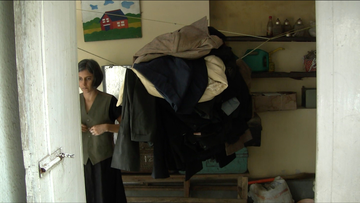
With this project, Smriti embarks upon remembrance, which is also the meaning of her name. She ventures into this territory in an endeavour to not leave unnoticed the deep imprints of those closest to her. She acknowledges that her memories are fraught with biases, gaps and fictions blurring fact but what she attempts to stay true to is the emotion paired with the fragments of memory to form a newer understanding of her relationships. She is both a purveyor of information and storyteller, taking the mundane & every day and unravelling & reassembling these details into visible intricacies. While sorting through her grandmother's things after her death, Smriti came across a trunk full of her grandfather's clothes that had been put away after his sudden and early demise. This video project is about loss, letting go and preserving memory.
-
Mani Mehrvarz, The Price of Oil, USA, 2019, 19:01

The video is created for The Price of Oil, written by the American composer Frederic Rzewski in 1980, and currently musically performed by Wooden Cities. The story is inspired by a contemporary disaster in which the "Alexander Kielland," a floating platform that used to house oil-drilling workers in the North Sea, capsized, killing 139 people. The video was made in an experimental process of assembling and incorporating eight thousand stills, and through combination of stop motion techniques and computer programing in the editing software.
-
Herve Penhoat, Waves, France, 2020, 2.17
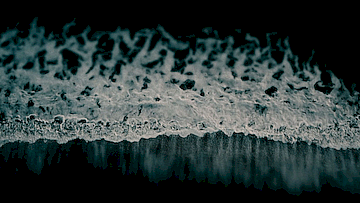
The sea has many faces. That of the shores is often welcoming. The sea in the heart of the ocean is dark, dark, disturbing. So powerful, that at some point, you could confuse it with a mountain, so obvious is its connection with the sublime and the fantastic. On one side, this sand and on the other the slow, dark, lively, but raging sea from the inside, the presence of which influences my vision of the place. The depth of the abyss is allowed to appear by its color. Close to black, its reassuring blue seems to disappear, giving way to darkness. The foam, indirect border, seems to clean the surface of the residues of blue pigments.
-
Andre Perim, Infotoxication, Brasil, 2018, 4:49
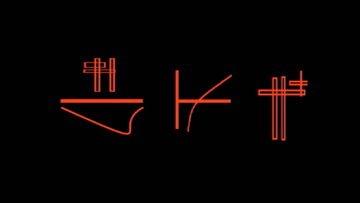
INFOTOXICATION, Infobesity or Information. Overload is a concept that describes a state of paralyzation caused by the excess of data. The question is "How much information we can handle?" or "What kind of changes are we facing in our perceptions and aesthetics to support the continuous increase of audio-visual information?" From this starting point, I produced a video artwork creating an imaginary language based on ideograms. The same way, the spoken language was created through artificial means (Voice Generator, Vocoder, Audio manipulation) and presented in a vertiginous pace to create an atmosphere of chaos and claustrophobia.
-
Sandra Pulido, Memorial, Colombia, 2019, 7:47

-
Luis Carlos Rodriguez, Ani_av1 (collage18), Spain, 2019, 6:28
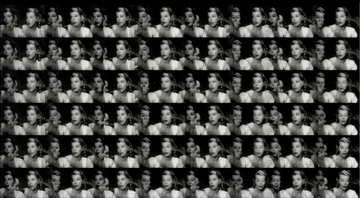
At first it was the moving image and the purely audiovisual. The public domain now allows us to experiment with the narrative, without its commercial profitability, and returns us, for its ecological recycling the images and the craft of making art and the places and laurels where to exist. Now time returns everything. Basting the public domain. Recreating the wonderful music of Berthelot.
-
Hiroya Sakurai, The Stream X, Japan, 2019, 7:00
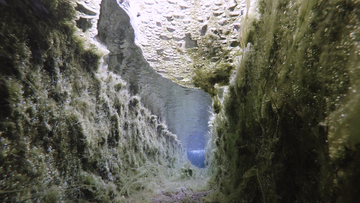
In the man-made waterways of rice paddies, the water in nature must follow artificial rules. In that way, nature is made abstract, giving rise to a new form of beauty distinct from the natural state. The theme of this work is the liveliness of water as it follows the man-made course. This work is a ballet using the sound and the movement of the algae and water. With the waterway as the theater, I filmed the choreography of the algae that flows in the water.
-
John Sanborn, Fleeting Thoughts About the Future, USA, 2019, 18:22
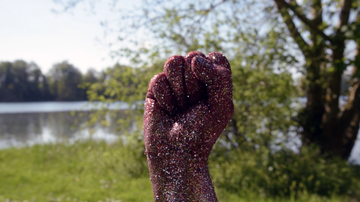
We dream of the future, as we have for thousands of years – and we imagine a time when civilization has solved its problems, located joy and improved the state of humanity. However, every BIG picture is composed of smaller parts. The future will happen slowly, distinctly and intimately– through changes to each of us, and change we bring to the world. Fleeting Thoughts is collage of variations and evolutions – singular gestures and thoughts – that describe a possible future. Rooted in the power of the individual and exhibited in a fleeting and metaphoric manner, the work helps us to discover how small the future will be.
-
Zhon-Zhon Sandyr, Kuchiran Yuri, Lud, Russia, 2019, 3:40
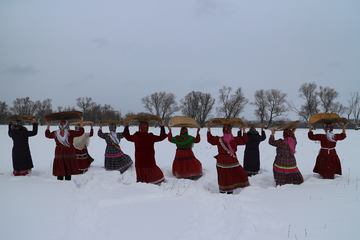
Lud. The place of Udmurt prayer. The ancestors are calling. They await. The Place of Power is activated by women — the contemporary residents of the Staraya Sal’ya village. The women with their hands outstretched upwards in the orans posture, a symbol of the intercessory prayer, holding syulisi (Udmurt. ñþëûñû). Syulisi are the empty calling vessels, amplifying the Expectations of the people and receiving Manna from Heaven to the restless technocratic sound of the working tractor.
-
Nayra Sanz Fuentes, Selfie, Spain, 2019, 9:50
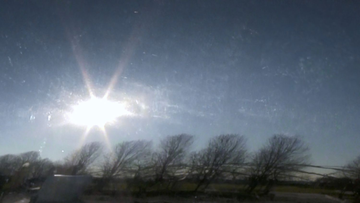
This conceptual and sensory miniature rethinks the concept of the social (self) portrait by playing with the distortions of a Big Brother impassively watching over us. A technological state of permanent control, of mechanization of a daily life ruled by a human-made inventiveness that has ended up taking control of our lives.
-
Kamen Stoyanov, Up and Through, Austria, 2020, 10:00
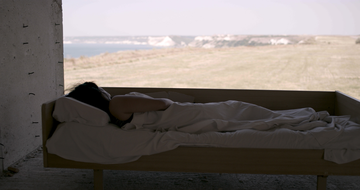
A journey of a bucket filled with sea water starts and continues up a steep cliff. On the cliff a man carries the bucket through an unfinished hotel. “Up and Through” shows the post-apocalyptic life of à wrecked hotel through its encounter with art.
-
Tseng Yu Chin, Scenery Other End, Taiwan, 2018, 9:11
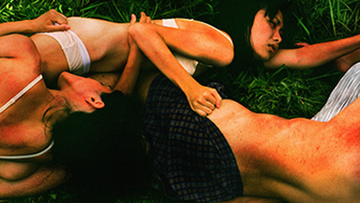
There are five single-channel video clips displayed in this work. I make the sound surrounded in this massive pentangle space painted in dark green. It’s a metaphor for love and destiny of our life. Let’s try to imagine you’re entering a prairie when you’re just a newborn baby and all you can do is to keep crawling because there’s no chance to make a stop. You keep moving ahead to somewhere you assumed it’s a forward place. There’re no rules or order in this case. Afterwards, you touched and acknowledged there’s someone else with you in this journey, therefore, you both depend on each other and marching on in this endless grassland. It’s about a statement of life in my opinion. Life is all about moving on and attaching to someone else.
-
Mikhail Zheleznikov, Revision, Russia, 2020, 4:00

This work is small study of an old photograph found in Oberhausen last year.
NON-COMPETITION PROGRAM
-
Evgeny Berezin, Self-isolation, Russia, 2020, 2:16
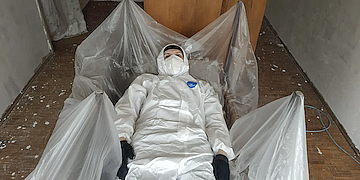
Self-Isolation is my first video work and it was born by accident. At the moment of its creation I was moving to a new place of residence and doing some minor repairs there. It was in early April, and the coronavirus was already raging in Europe and the USA, while in Russia many still did not believe that the pandemic would spread in our country as much. Then I bought a protective suit — just for painting. In the process I realized that what I was doing was not simply repairs, but a set design, and then I had an image: a bright sunny day, people walking, and my “isolated” white room with furniture wrapped in cellophane… I decided to experiment on myself and immerse myself into the circumstances of this image, which is perhaps slightly cinematographic and ironic.
-
Andrew Binkley, Uncertain Times, USA, 2020, 7:35
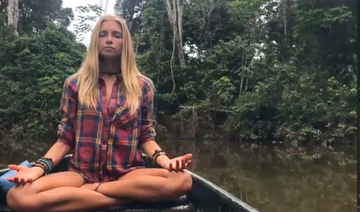
The color of our global mantra during these uncertain times.
-
Marina Chernikova, Without Stops, Russia, 2018, 3:40
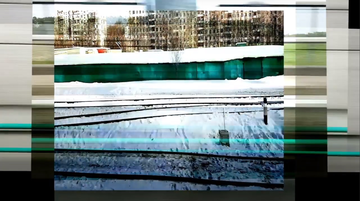
Landscapes pass before eyes. Houses, pillars, graffiti, platforms, rails — visible from the window of express train, they turn into almost abstract forms and spots. They appear at once and instantly disappear. And, as if saying goodbye, these images become brighter, as do memories of them.
-
Ekaterina Danenova, Marina Rudenko, Isolation, Spain, 2020, 19:59
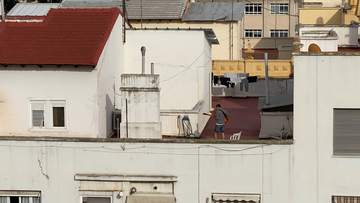
What is the color of despair? In the light of recent events the world has found itself in a very unfamiliar situation. People, locked within four walls, cornered, intimidated by the news. What does the future hold for them? Now everybody feels like a caged animal. Pacing the room back and forth, trying not to go mad. The monotony of days. Devoid of change, days become the same: humdrum and dull. Many people are left to deal with the alien feeling of loneliness. What will stay, and what’ll die later, trying to cross the border and get back to the real world?
-
Leta Dobrovolskaya, Youth, Russia, 2019, 5:22

Leta Dobrovolskaya tries to grasp the instantly decaying matter of a perfect human body. Three ages is one of the art’s eternal themes, but in this case the desperate courage of youth and the gloomy sarcasm of old age are not the point. What is important is the idea of eternal youth, which equals to beauty and life as such.
-
Aazedine El Ouafi, Quarantine, Morocco, 2020, 3:47
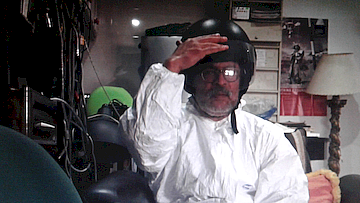
Different people are at their windows all obsessed with the lockdown. The concept of the work was to create a collage from real scenes and films combined around the idea of people being locked all over the world.
-
Cristian Fierbinteanu, The Cultural Icon, Romania, 2020, 5:20

An eye-candy video experiment about dance, music, society, doctrines and the people involved in any kind of propaganda. Depending on individual levels of humanity, acidic skepticism or divine grace, this kaleidoscope of past, present and future could inflict a revolution or a self-evolution.
-
William Humphrey, Devenir Personne, Canada, 2019, 12:10
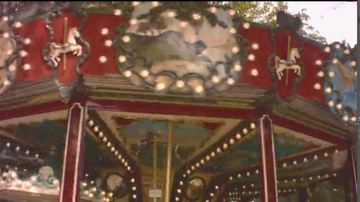
“I would rather light a candle than curse your darkness”. A heavy-handed travelogue of dynamics, colors, patterns, and dances across untold places.
-
Chihiro Ito, Last Interview Film of Jonas Mekas, USA, 2019, 15:00
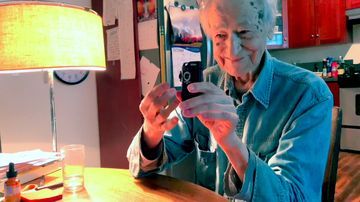
This is the last filmed interview of Jonas Mekas. This is a last gift from Jonas to us. Interview: Jonas Mekas. Direction & Film: Chihiro Ito. Edit, design, drawing: Chihiro Ito. Thanks: Jeffrey Parkins, Kaori Ito, Matt Mottel, Yoichi Kamimura, microscope gallery. Special thanks: Jonas Mekas. 2019 ©Chihiro ITO
-
Francesca Leoni, Davide Mastrangelo, Alzaia(S), Italy, 2019, 4:11
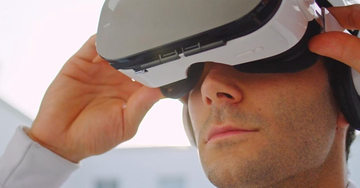
This video, inspired by Telemaco Signorini’s painting “L’Alzaia” (1864), devoted to the difficult condition of the poor working class compared to the rich class, represented by the indifference of the master. The painting has a formal mathematical symmetry, that resembles Piero della Francesca’s works. In this way, the artistic duo Leoni–Mastrangelo, uses the symbols of this painting mixing them with the symbols of contemporary world, to think over the power of technology and its constant evolution, and how it could create, in the near future, a mass situation of “slavery” caused by technocratic and indifferent kind of power.
-
Danila Lipatov, Overwhelming Attraction, Russia, 2019, 7:47

Based on Soviet technicolor melodramas from the 1950s the film recreates the macabre choreographies of post-Stalinism. Everybody spies on everybody else. Nobody is sure anymore what their sweetheart looks like.
-
Alina Maksimenko, Local Time. King Lear, Ukraine, 2018, 4:30
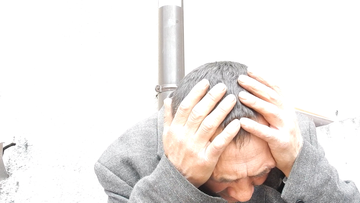
“Local time. King Lear” is the monolgue of Nikiforovich, a homeless man who lives on the streets of Podol. We met about a year ago, when I started painting his “full-dress” portraits using the video footage discreetly shot from the window. I felt like he came straight from my favorite work by Velasquez held in the permanent exhibition in the Prado Museum. I shot Nikiforovich’s musings on camera. He spoke heartily and opened up in an incredible way, inspired by my interest in him. We came upon King Lear in one of our talks on an early morning near a metro station on the Kontraktova Square. It was cold. “King Lear? I know it!” said Nikiforovich. He recited Shakespeare in the translation by Maksim Rylsky.
-
Denis Mustafin, Lyudmila Zinchenko, Zå, Russia, 2020, 4:23
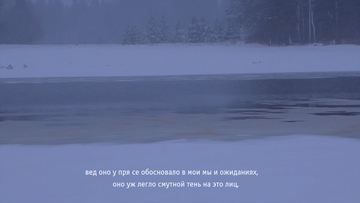
Water surface was the first to reflect the duality of the world, thus forerunning the mirror. Waters carry memories downstream from the past to the future. A river brings back an image, but deprives of memory about it. T9 could have assisted, but just like a river it drowns memory in the flow of word scraps. Rivers merge together with all their reflections, and the memory dissolves in them.
-
Vivian Ostrovsky, Unsound, USA, 2019, 4:00
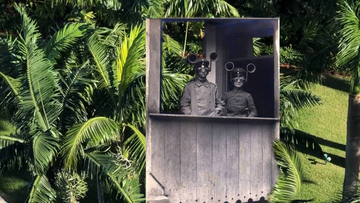
A Russian can say, “I hear the smell…” A maestro has a vision of what a symphony should sound like. Jean-Luc Godard “listens to the light”. In a silent film how can one make the spectator see the sound? A vivid and noisy assemblage of archival and contemporary imagery meditating on the past and presence of film audio.
-
Christian Alexander Rogler, I Wanted to Live, Germany, 2018-2019, 81:00
The film “I Wanted to Live” presents a new, cinematic form of information transfer. The work consists of a list of names (as far as known) and reasons for death of 35,597 refugees and migrants who have lost their lives in or on the borders of Europe since 1993. It is primarily meant to be a silent, digital memorial for the dead. A pause, time for reflection and a meditation about our current world.
-
Paulius Sliaupa, Sonder, Lithuania, 2019, 12:52

Sonder is a non-narrative film which is divided into the observation of everyday life in different spaces: nature, a beach in the evening, a summer night, traveling in the outskirts of a city, discovering creatures observing you; urban life, a winter night in a frozen city, fragments of a woman’s body inside a flat; the macro world. Sonder is the feeling of realizing that everyone that you do not know, has a life as complex as yours. The shadows of people that appear in the film suggest that the film is a part of a bigger world seen through a subjective vision.
-
Sofia Slonim, Sweater, Russia, 2020, 3:37
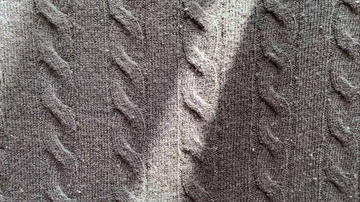
With this very short piece I wanted to show how the soul hovers after having been separated from the body, but perhaps this is also an image of a journey taken by an individual who has experienced a loss.
-
Joel Cortina Suárez, A Desert Appears, Argentina, 2019, 8:00
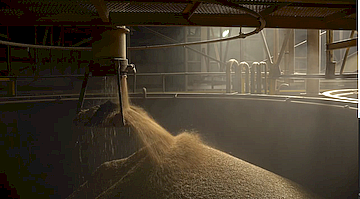
The apathetic behavior of a group of machines in full activity, the ghostly presence of its workers and the remains of equipment in an evident condition of stagnation, deterioration and oblivion provide signs of the final destination of an emblematic, historic site and the economic present of a country.
-
Madara Tropa, Transfer over a White Field, USA, 2020, 5:52

As genesis 3:19 proclaims "for dust you are, and to dust you will return", in this video I immerse myself into fire place ashes collected over a long and deep winter. I rub their remnants in my skin, from an old cardboard box. Facing the vaporousity of nature while submitting myself to my own impermanence. The order of the cycle of life is symbolized in dust. Both dust and humans, we leave a trace over the landscape. Ash is not only the residue of fire, but also a material symbol of re-creation. As we breathe our own dust, we can explore the need of the world and ourselves for re-creation.
-
Yinglin Zhou, One World One Dream, Germany, 2018, 11:09
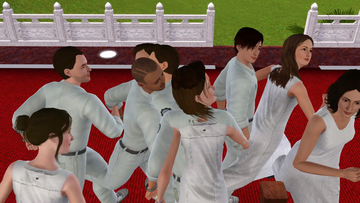
"One World, One Dream" is the slogan of the Beijing 2008 Olympic Games. In relation to my work, this reference stands for unifying the world. I built the "Mondo" (meaning: world) of various places of interest in the world. In the "Mondo" city, "Civitano" (meaning: citizens) can live in any place. "Civitano" represent their country of origin, and cultural labels such as history, culture, language, etc. In the "Mondo" city, the first task is to build the "Babel Tower." In order to build efficiently, all "Civitano" can only use one language — Esperanto. In the work, I use four languages to form a “frame” on the four sides of the screen, and also to imply that the differences in languages restrict the cross-cultural communication.
Jury
Elena Tsvetaeva
Russia
Director of the Baltic Branch of The Pushkin Museum of Fine Arts (Baltic Branch of the NCCA, Kaliningrad). Graduated from the Cultural Management Department of The Moscow School of Social and Economic Sciences (1999) and the Graphic Arts Department of The Herzen State Pedagogical University (1988). Since 1993, Elena curates projects and programs in the field of contemporary art; she is engaged in studying artistic spaces, their recreation and manifestation in society. She works with identity of the cultural and historic heritage of the Baltic region, its updating and artistic interpretation. Elena is a member of the International Association of Art Critics (AICA, Paris).
Jeauk Kang
Republic of Korea
Director of Suwon Photo Festival. He is active as a photographer, visual artist, and curator. He is promoting various international exchange projects in the field of visual arts. He is also director of art and disaster projects that overcome trauma with artists in disaster areas.
Kika Nicolela
Belgium
Brazilian artist, filmmaker and independent curator based in Brussels since 2014. Graduated in Film and Video by the University of Sao Paulo, Kika Nicolela has also completed a Master of Fine Arts at the Zurich University of the Arts (ZHDK). She was the recipient of several prominent Brazilian and Belgium grants
SPECIAL PROGRAM
Waley Art Center, South Sour Water Performance and Visual Art Festival
Curated by Peng Tsai-Hsuan
Waley Art is a contemporary art alternative space founded in August 2014 and located in Taipei City, Taiwan. In 2016, Waley Art held the Galaya Art Festival, which was linked to the cultural history of the region. In 2018, Waley Art hosted the South Sour Water Performance and Visual Art Festival. Waley Art has cooperated with museums, art festivals, biennials and art institutions around the world, including Russia, Poland, Germany, Austria, Japan, South Korea, Malaysia, Hong Kong, Nepal, Singapore, Thailand, Bangladesh and Argentina.
“Sour water” is the matter vomited up when one gets sick, which in turn disturbs the body’s harmonious dynamics. The South Sour Water Performance and Visual Art Festival tackles the hybridity of contemporary visual culture, resists social, generational and cultural institutions and utilizes performance as a way to experiment with body awareness.
Artists: Tseng Yu-Chuan, Luscious Afternoon Drink — A Relaxed Day, Taiwan, 2019, 3:40 / Tseng Yu-Chuan, Luscious Afternoon Drink — Tasting the Flavor, Taiwan, 2019, 1:00 /
Hsu Hui-Ching, The Right to Speak, Taiwan, 2016, 10:10 / Chen Chun-Yu, Kimchi machine, Taiwan, 2017, 1:40 / Ishtar Hsu, Practice 005, Taiwan, 2019–2020, 16:22 / Jun-Yuan Hong, Absence-Keep Silent, Taiwan, 2018, 8:12 / Huang Yen Chao, Blue Water, 7:17 / Hsu Chun Yi, Humid Screen, Taiwan, 2016–2019, 3:19 / Sun Yi-Hua and Hong Siopang, Flower Flows, Taiwan, 2020, 10:00
Peng Tsai-Hsuan
The Founder and Art Director of Waley Art and the former executive director of the Taiwan Monga Culture Creative Center. He is the founder of the Galaya Art Festival and the South Sour Water / Performance and Visual Art Festival. Peng also worked as the main project investigator with the National Taiwan Arts Education Center, the Asia Culture Center and the Korean and Mediations Biennale Poznań, Poland. He is the organizer of the art administration and curatorial workshop for the Ministry of Culture in Taiwan. In 2015, Peng Tsai-Hsuan won the Best Art Award for the project “Art Participation in Community” hosted by Taipei Fine Arts Museum and was invited as the keynote speaker to the 2016 Taipei Biennale.
Curated by Gabriel Soucheyre
VIDEOFORMES is a structure for diffusion and artistic production which annually organizes, since 1986, an international video and digital art festival. The festival highlights various artistic forms such as installations, videos, performances and multidisciplinary digital creations. The event is a chance to bring internationally renowned artists (such as Bill Viola, Gary Hill, Catherine Ikam, Pierrick Sorin, Chris Marker, Samuel Rousseau, Ko Nakajima, John Sanborn) and young artists face to face. Beyond the festival, VIDEOFORMES takes part into regional, national and international cultural events, and initiates a policy of artists-in-residency. While the festival offers a programme including multidisciplinary as well as experimental performances (vidéobars), it also publishes a magazine (Turbulences Vidéo) on a monthly basis and provides artistic and cultural initiatives for a young public.
Artists: Regina Hübner, kissing, Austria, 2020, 6:50 / Agnès Guillaume, Days after days / Gesture #6, Belgium, 2019, 4:14 / Isabelle Arvers, Mer rose, France, 2019, 11:00 / Boris Labbé, SIRKI, France/Japan, 2019, 8:00 / Agnès Guillaume, Days after Days / Gesture #3, Belgium, 2019, 4:57 / Bob Kohn, Horizons, France, 2018, 3:50 / Maxime Corbeil-Perron, Displacement, Canada, 2019, 8:50 / Thomas Renoldner, DONT KNOW WHAT, Austria, 2019, 8:05
Gabriel Soucheyre
The director of VIDEOFORMES, an International Digital Arts Festival in Clermont-Ferrand, and of the VIDEOFORMES Digital Archive since 1986. He is also the editor of Turbulences Video (a video art and Digital Culture quarterly magazine). He is a curator at the VIDEOFORMES Galerie. He participates in many national and international events as a curator or jury member. He is a former teacher at Université Clermont Auvergne, Clermont-Ferrand and also a video and digital art producer, vlogger and videomaker.
Curated by Kang Jeauk
The Suwon International Photo Festival is an annual documentary photography festival that takes place in the Korean city of Suwon — a creative and cultural hub with an abundance of artists and ideas. Suwon Photo is the only independent photo festival in Korea; it is run by a group of trailblazing photographers who place great value upon the freedom of expression present in the festival’s remarkable exhibitions. Suwon Photo has recently been expanding its fields of interest, and is organizing exchanges with neighboring genres such as video art.
Artists: Kim Changkyum, Life in the Mandala, 2019,40:30 / Han Seungku, Moon, passing here, 2019, 5:39 / CrossDesignLab (Sung Jung Whan, Park Min Ji, Jeong Hyowon, Jeong Jiyun), sound: Hyebong Buddist monk, Cheonsu Gwaneumdo, 2020, 20:00 / Lee Kyungho, People for Black Earth, 2019, 7:28
Shin Kiwoun, piano — Goh Heean, Good morning Good afternoon Good evening Good Night_Jamsu Bridge, 2019, 3:47 / Ha Seokjun, A monk — the platform of suffering, performance video, 2013, 5:00
Kang Jeauk is photographer, visual artist and curator. He is the director of Suwon Photo and promotes various international exchange projects in the field of visual arts. He is also director of «art and disaster projects» that overcome trauma with the help of artists in disaster areas.
Curated by Maurizio Marco Tozzi
This festival was born in 2015 from an idea by Maurizio Marco Tozzi and Lino Strangis. Over The Real presents the most significant areas of research that have emerged in recent years in international audiovisual arts. Every year the works are selected by an important panel of curators. Over The Real takes place at historical locations around Lucca (Italy). The Festival also presents installations, multimedia performances, workshops and talks with the participation of important artists and media art experts.
This selection presents some of the most interesting authors who have participated in the last editions of Over The Real. These are artists who contribute to the evolution of the aesthetic and semantic abilities of different video art languages. Their works illustrate new visions to escape a world full of loneliness, violence, and an unbalanced economy and also invite the public to seek a new awareness and balance, overcoming the thresholds of perception and the space-time dimension. Something truly profound seems to happen in the faint darkness of the human condition, and sometimes a small breath can change things.
Artists: Eleonora Manca, In search of poetry, Italy, 2018–2019, 3:06 / Anna Beata Baranska, Hidden Memories, Poland, 2019, 3:09 / Apotropia, Blackhole Edge, Italy, 2019, 6:39 / Jing Wang & Harvey Goldman, Strange Attractors, China/USA, 2020, 5:16 / Lino Strangis, Dreamlike of a Present Future, Italy, 2019, 4:49 / Alessandro Amaducci, The Glitch and the Fire, Italy, 2019, 6:19 / Igor Imhoff (Music Lunakid), Bleed, Italy, 2020, 4:40
Maurizio Marco Tozzi is a contemporary art curator. He has focused his research on the audiovisual language and the relationship between creativity and new technologies. He has curated exhibitions in important galleries and museums and he regularly takes part in lectures and talks about contemporary art. His last essays are: Gianni Melotti, art/tapes/22 video tape production (Giunti publisher, 2017), and The Italian Video Art (Danilo Montanari publisher, 2016). He is a lecturer in Digital Culture at Alma Artis Academy of Pisa.
Curated by Kika Nicolela
Common Ground is a collaborative project created by Kika Nicolela and supported by Transcultures Pépinières Européennes de Création.
It’s the beginning of a new decade, and the human species faces an invisible, faceless, brainless yet highly efficient enemy: a virus that menaces our lives and our way of life. The tendency is to attempt to return to “normality” as quickly as possible, and to forget this period. Alternatively, we see the COVID-19 crisis and all that it triggered, as an opportunity to reflect on some essential political, economic, ethical and metaphysical questions.
The Common Ground Project proposes a creation of a growing database, with the collaboration of artists around the world, sharing video, sound and/or text-based pieces. The main immediate goal is to collect a large and varied snapshot of the impact of this crisis from various corners of the planet, to realize how people are coping with the lockdown and the post-lockdown, but above all, how we can use this crisis as an opportunity to reshape the world.
The project will have its first public presentation at the International Video Art Festival Now&After’20 in Moscow.
Artists: Adrianne Little (US) | Aline Yasmin & Alex Cepile (BE) | Anna Berndtson (DE) | Carlosmagno Rodrigues (BR) | Christophe Litou (FR) | Craca (BR) | Davi Cavalcante (BR) | Fumiharu Sato & Hiroko Haraguchi (JP) | Gauthier Keyaerts (BE) | Gerard Chauvin (FR) | Gustavo Marcasse v(BR) | Isa Belle + Paradise Now (BE) | Ivelina Ivanova (BG) | Jan Kather (US) | John Sanborn (US) | Jorge Lozano (CAN) | Liliana Velez (CO) | Luana Lacerda (BR) | Marcia Beatriz Granero (BR) | Marina Fomenko (RU) | Mike Hoolboom (CAN) | Nia Pushkarova (BG) | Nung-Hsin Hu (US) | Philippe Boisnard (FR) | Phyllis Baldino (US) | Rejani Cantoni + Mirella Brandi + Muep Etmo (BR) | Samuel Bester (FR) | Sara Não Tem Nome (BR) | Simon Dumas (CN) | Simon Guiochet (FR) | Sonia Guggisberg (BR) | Susana Lopez (ES) | Ulf Kristiansen (NO)
Kika Nicolela is a Brazilian artist, filmmaker and independent curator based in Brussels since 2014. Graduated in Film and Video by the University of Sao Paulo, Kika Nicolela has also completed a Master of Fine Arts at the Zurich University of the Arts (ZHDK). She was the recipient of several prominent Brazilian and Belgium grants and awards. Since 2008, Kika Nicolela also curates and coordinates the Exquisite Corpse Video Project, an ongoing collaborative series of videos that involves more than 90 artists from 30 countries
Curated by Dzhamilya Daghirova
The First Gallery is the Dagestan contemporary art gallery (Kaspiysk). It was established in 1998 as an independent non-state art institution. It mainly focuses on exhibitions and projects featuring contemporary Dagestani artists, as well as research projects, publishing practice, projects for children, workshops and charitable programs.
This is a retrospective screening of video art pieces created by contemporary Dagestani artists over the years. All the featured authors are well-known artists of the republic working in a variety of media, from painting and graphic arts to sculpture, installation and performance. Video art has been actively gaining momentum to become more and more popular among contemporary Dagestani artists to express problems and themes they are facing. Many of the works of the Art Video Fest were created and demonstrated in the projects of Pervaya Galereya: The North Caucasus Biennial 2013, Water (2009, 2012), Koisu (2014), In Search of the Wanted (2015), as well as in solo shows. Our screening features premieres: The Tears TV and The Shooting of Clay Horses by the famous Dagestani artist, the first video artist in the republic, Murad Khalilov; Fear by Magomed Mollakaev, Sabab by Zaira Magomedova and Khalimat Saidudinova, and Klaz by Zaira Magomedova.
Artists: Musa Gaivoronsky, Food (2014, 4:39), I Am an Artist (2017, 4:57); Elena Dzhetere, Myukhhyubat nir (2014, 2:30); Zaira Magomedova, November (2013, 2:12), Klaz (2017, 12:29), A Broken Needle (2015, 10:30); Zaira Magomedova, Khalimat Saidudinova, Sabab (2019, 10:01); Magomed Mollakaev, Fear (2018, 1:13); Timur Musaev-Kagan, This Is Almost Everything (2016, 13:00), Muteness (2014, 4:50); Murad Khalilov, The Shooting of Clay Horses (2016, 1:25), The Tears TV (2015, 5:09)
Dzhamilya Daghirova is curator and founding director of The First Gallery. She has been working as a museum specialist for 30 years and running the gallery for 22 years. She is author and curator of all the Gallery’s projects and exhibitions, participant and co-curator of many regional and all-Russian projects, and an artist. She is a member of the Artists’ Union of Russia, of the Russian Art Critics Association and of the ICOM Russia.
Day By Day (Lockdown 2020)
Curated by Marina Fomenko
The pandemic and lockdown are events that have largely determined our lives this year. Video artists left to their own devices in isolation/self-isolation/quarantine have been filming anything and everything. There was little choice: we have been filming ourselves, things happening in our homes, what we see outside our windows, or we have edited found footage from online archives or videos from the Internet. The artists have used all these approaches day by day. The Day By Day (Lockdown 2020) Program presents artworks created during Covid quarantine times.
Artists: Evgeny Berezin, Self-Isolation, Russia, 2020, 2:16 / Andrew Binkley, Uncertain Times, USA, 2020, 7:35 / Ekaterina Danenova, Marina Rudenko, Isolation, Spain, 2020, 19:59 / Anastasia Denisova, Maria Alina, Bored in the House, Russia, 2020, 20:00 / Alexandra Mitlyanskaya, When I Am Home Alone, 2020, 3:20 / Marina Fomenko, Portrait of The Shukhov Tower (Lockdown), 2020, 4:34 / Azedine El Ouafi, Quarantine, Morocco, 2020, 3:47
Marina Fomenko is an artist and curator, and has been a participant of numerous exhibitions and festivals in Russia and worldwide. Since 2011 she has organized and run the International Video Art Festival Now&After in Moscow.
Sergey Filatov, Searching for a Floating Point, sound performance
Sergey Filatov constructs multichannel soundscapes using his own custom-designed musical instruments and field recordings. Inosphere is a hybrid sound system created by the artist, where each module is a bundle of sound generators and filters. The devices’ shells are made of marine gyrospheres. The sound of the instrument is combined with sound generations collected using hydrophones in underwater spaces.
Sergey Filatov is a musician, sound artist and developer of musical instruments and sound sculptures. He is a member of the Artists’ Union of Russia and of the International Association of Art (IAA/AIAP, UNESCO). He has participated in international exhibitions and festivals of contemporary art: the 58th Venice Biennale, the Yorkshire Sculpture International 2019 (UK), Ars Electronica (Austria), Laboratory of the Future: The Kinetic Arts of Russia (St. Petersburg). Filatov is the winner of the VII International Contemporary Art COMEL Award (Italy, 2018) and the Sergey Kuryokhin Contemporary Art Prize (2017).
|






















































